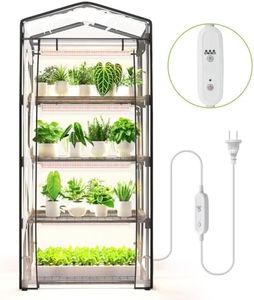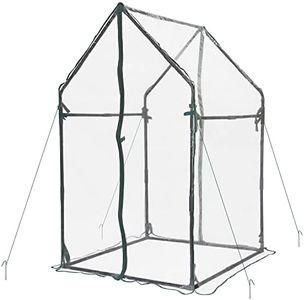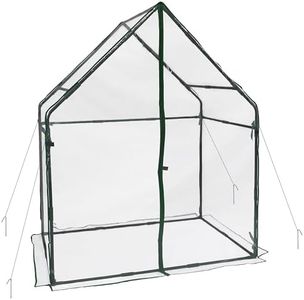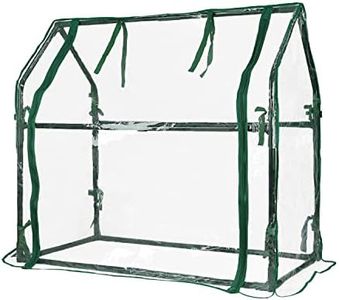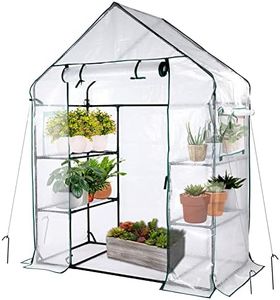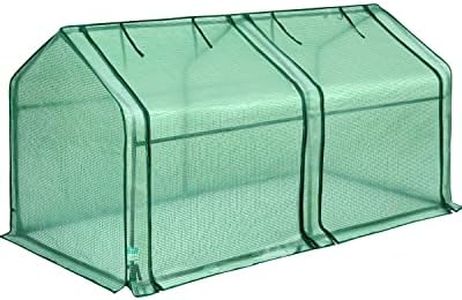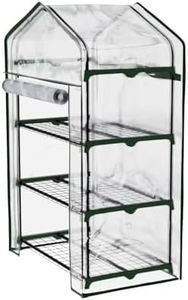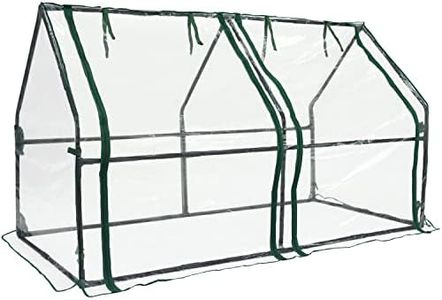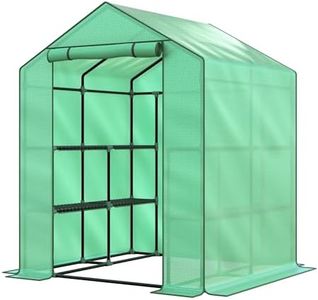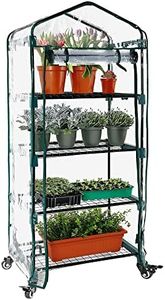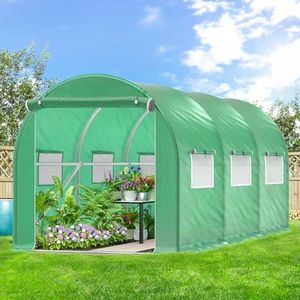We Use CookiesWe use cookies to enhance the security, performance,
functionality and for analytical and promotional activities. By continuing to browse this site you
are agreeing to our privacy policy
10 Best Portable Greenhouses
From leading brands and best sellers available on the web.Buying Guide for the Best Portable Greenhouses
Choosing the right portable greenhouse is all about matching your gardening needs and available space with the features that help your plants thrive. Portable greenhouses are popular for their flexibility, letting you start plants early in the season, extend the growing period, or protect your garden from harsh elements. To pick the best one, focus on where you’ll place it, what you plan to grow, how often you’ll move or store it, and how much maintenance you’re comfortable with. Understanding the main specifications will help you make a confident choice that fits your home or outdoor area.Size and DimensionsSize and dimensions refer to the greenhouse's overall footprint and interior height. It's important because it affects how many and what types of plants you can grow, and whether the structure fits your space. Greenhouses come in compact versions for balconies or patios, medium sizes for small yards, and larger models for more ambitious gardens. To decide, think about your available space and the number or size of plants you want to accommodate—always make sure there's enough room for air circulation and for you to access your plants comfortably.
Frame MaterialThe frame is what holds your greenhouse together, and common materials include metal (usually steel or aluminum) and plastic. Metal frames are sturdier and last longer, but they can be heavier, which makes moving the greenhouse more difficult. Plastic frames are lighter and easier to assemble or relocate, but they may not withstand heavy winds or snow as well. When picking, consider how often you'll move your greenhouse and the typical weather in your area—choose strength for tough weather, or lighter options for easy portability in milder climates.
Covering MaterialThe covering, often called the glazing or skin, is vital because it determines how much light gets through, how warm it stays inside, and how durable your greenhouse is. Typical materials are polyethylene plastic, PVC, or polycarbonate panels. Thicker and UV-resistant covers last longer and provide better insulation but may let less light through. If you want to maximize plant growth and can replace covers when needed, a thinner film might be enough. If you're aiming for better protection and insulation, look for something thicker and more robust.
VentilationVentilation is about how air moves in and out, which controls temperature and humidity inside the greenhouse. Good ventilation prevents overheating and mold. Some greenhouses have roll-up windows, doors, or roof vents. If you live in a hot climate or plan to grow plants sensitive to humidity or heat, more ventilation options are better. For cooler climates or beginner gardeners, basic vents or zippered doors may be enough. Always think about how easy it is to adjust airflow as the weather changes.
Portability (Weight & Assembly)Portability includes both the actual weight of the greenhouse and how easy it is to take down, move, or store. Lighter greenhouses are simple to move around your yard or store over winter, while heavier ones might need to stay in one spot. Some models require no tools to assemble, while others might need a bit of effort. If you plan to move your greenhouse often or have limited storage, pick one that's lightweight and easy to put up or take down. For a more permanent set-up, weight and assembly complexity will be less concerning.
Anchoring and StabilityAnchoring is what keeps the greenhouse stable, especially in windy conditions. Some have built-in anchoring systems, like ground stakes or tie-down ropes, while others rely on their weight or need extra securing. If you’re in an area with frequent wind, prioritize a greenhouse with reliable anchoring options. If you’ll place it in a sheltered space, stability might be less of a worry, but it’s always smart to secure it so it doesn’t tip or shift.

